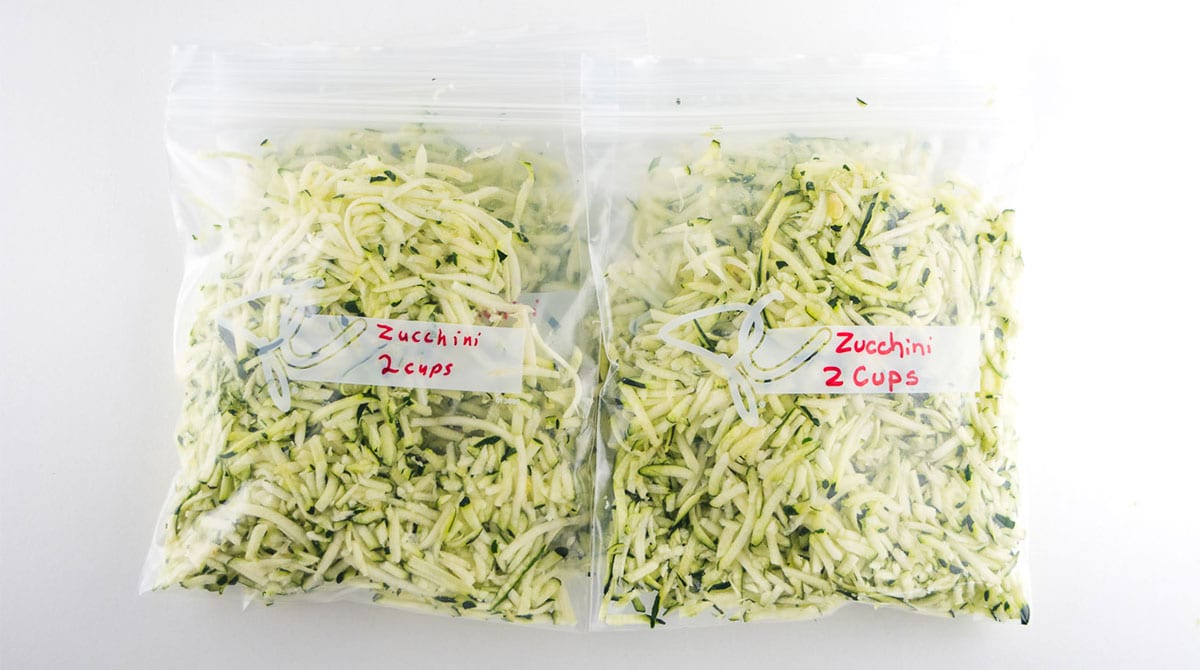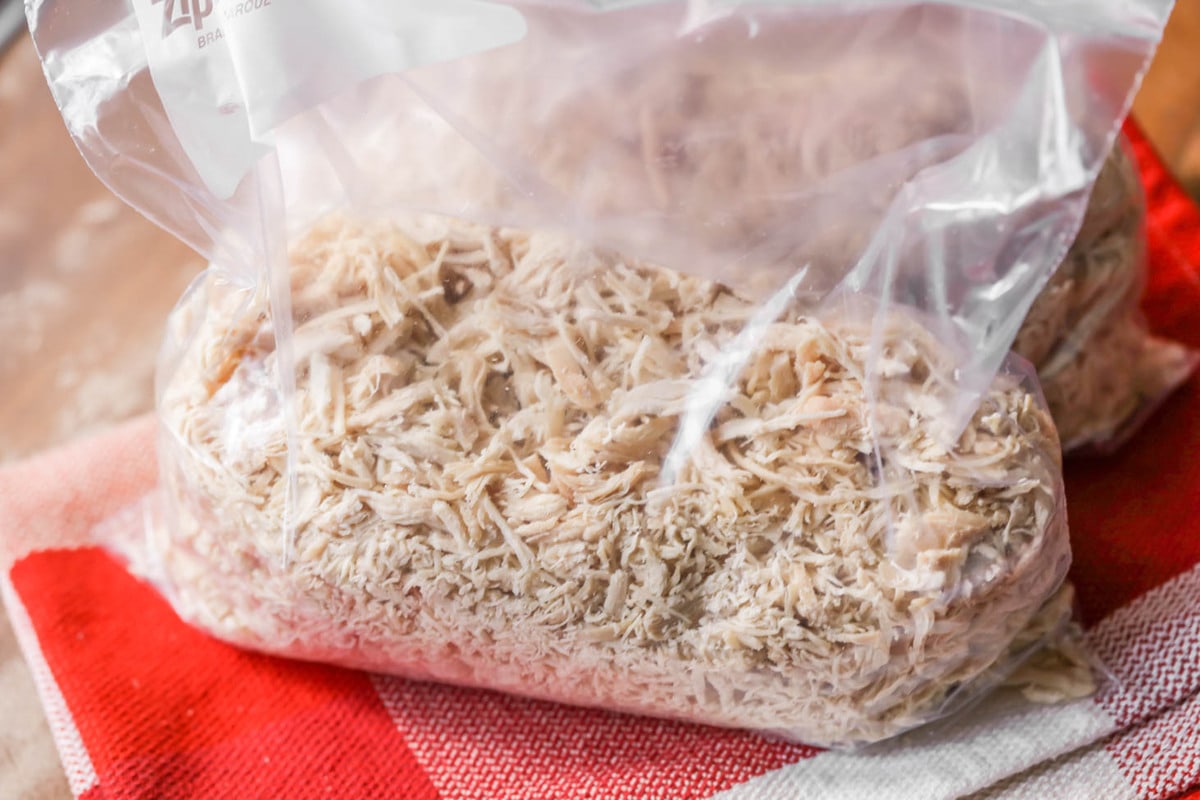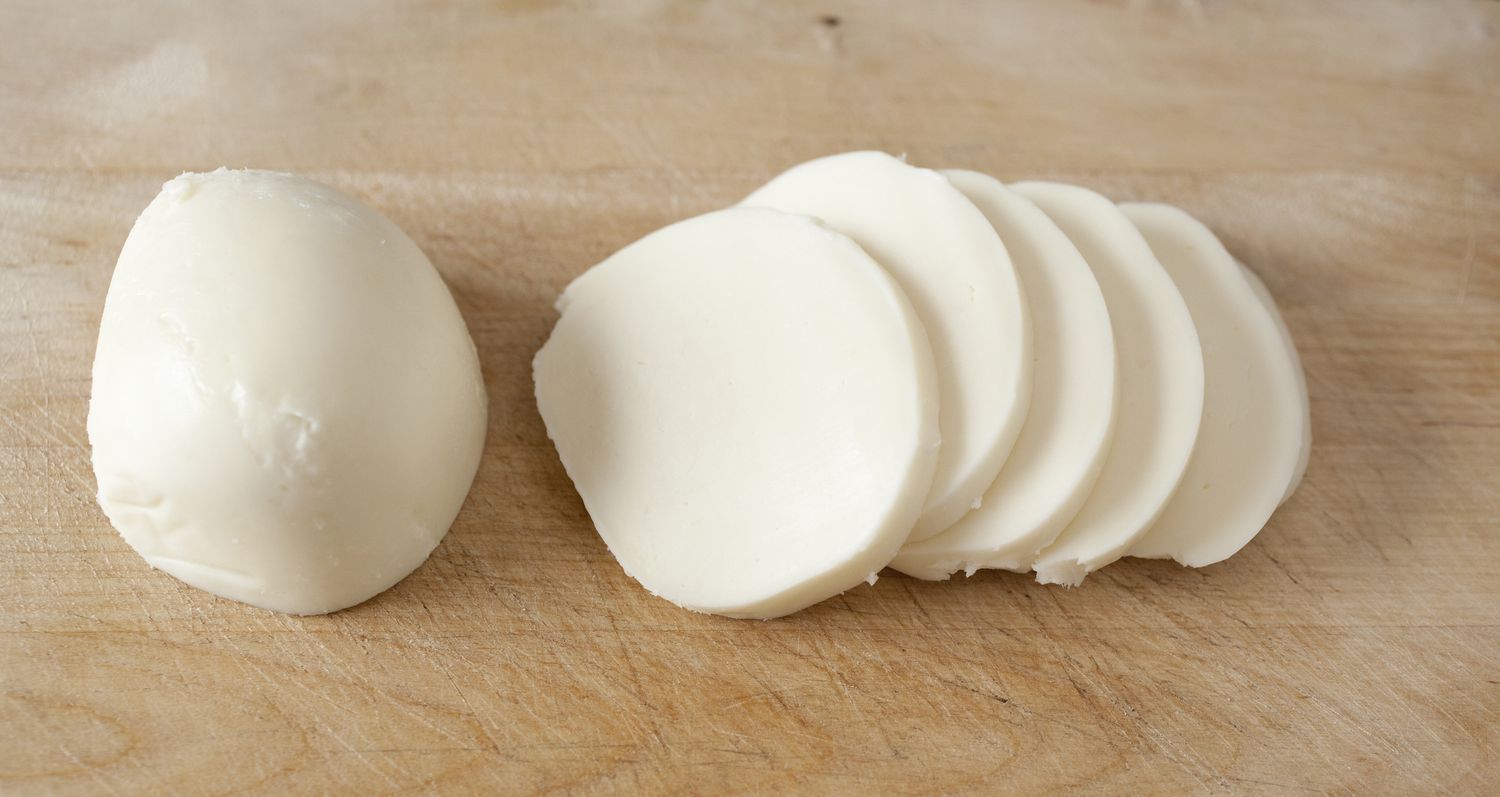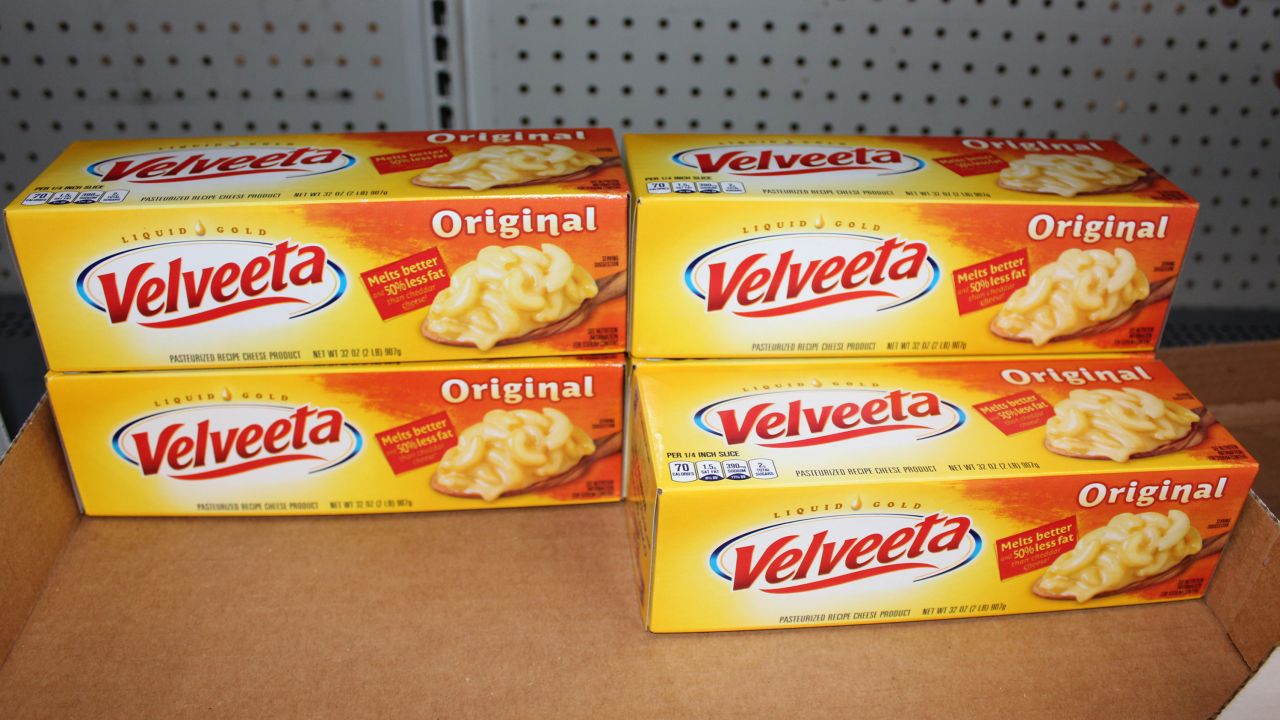

Articles
How To Store Shredded Cheese
Modified: January 5, 2024
Looking for tips on how to store shredded cheese? Check out our informative articles for helpful guidance on keeping your shredded cheese fresh and flavorful.
(Many of the links in this article redirect to a specific reviewed product. Your purchase of these products through affiliate links helps to generate commission for Storables.com, at no extra cost. Learn more)
Introduction
When it comes to culinary delights, few things can compete with the rich and savory taste of freshly shredded cheese. Whether you use it to top off a homemade pizza, sprinkle it over a flavorful salad, or melt it into a gooey sandwich, shredded cheese adds a delicious touch to any dish. However, to maintain its flavor and texture, proper storage is crucial.
Properly storing shredded cheese not only helps to preserve its taste but also ensures its safety. Cheese that is exposed to improper storage conditions can be prone to spoilage and bacterial growth, leading to potential health risks. By following a few simple guidelines, you can keep your shredded cheese fresh and enjoyable for a longer period.
Key Takeaways:
- Properly storing shredded cheese is crucial for maintaining its flavor, texture, and safety. Choose the right container, use wax paper, and keep it away from moisture to ensure freshness and prevent spoilage.
- Avoid freezing shredded cheese and regularly check for signs of spoilage to enjoy fresh, safe, and delicious cheese. Proper storage in the refrigerator and vigilant monitoring are key to preserving the quality of shredded cheese.
Read more: How To Store Shredded Cheese In Fridge
Why is Proper Cheese Storage Important?
Cheese is a delicate dairy product that requires specific storage conditions to maintain its quality. Shredded cheese, in particular, has a larger surface area exposed to air and moisture, making it more susceptible to contamination and quick deterioration. Proper cheese storage is essential for several reasons:
- Taste and Texture: Storing shredded cheese properly helps retain its flavor and texture. Improper storage can result in cheese losing its taste and becoming clumpy or dry.
- Safety: Cheese, like any perishable food item, can harbor harmful bacteria if not stored correctly. Consuming spoiled cheese can lead to foodborne illnesses.
- Cost Savings: By storing shredded cheese properly, you can prevent wastage and save money. Fresh cheese retains its quality for longer, reducing the need for frequent repurchases.
Now that we understand the importance of proper cheese storage, let’s explore some practical tips to ensure your shredded cheese stays delicious and safe to consume.
Key Takeaways:
- Properly storing shredded cheese is crucial for maintaining its flavor, texture, and safety. Choose the right container, use wax paper, and keep it away from moisture to ensure freshness and prevent spoilage.
- Avoid freezing shredded cheese and regularly check for signs of spoilage to enjoy fresh, safe, and delicious cheese. Proper storage in the refrigerator and vigilant monitoring are key to preserving the quality of shredded cheese.
Read more: How To Store Shredded Cheese In Fridge
Why is Proper Cheese Storage Important?
Cheese is a delicate dairy product that requires specific storage conditions to maintain its quality. Shredded cheese, in particular, has a larger surface area exposed to air and moisture, making it more susceptible to contamination and quick deterioration. Proper cheese storage is essential for several reasons:
- Taste and Texture: Storing shredded cheese properly helps retain its flavor and texture. Improper storage can result in cheese losing its taste and becoming clumpy or dry. By keeping it in optimal conditions, you can enjoy the full richness and meltability of the cheese.
- Safety: Cheese, like any perishable food item, can harbor harmful bacteria if not stored correctly. Cheese contains protein and fat, which are ideal environments for bacterial growth. When cheese is exposed to improper storage conditions, such as warmth or high humidity, it creates an ideal breeding ground for pathogens. Consuming spoiled cheese can lead to foodborne illnesses, causing symptoms like nausea, vomiting, and diarrhea.
- Cost Savings: Proper cheese storage can also help you save money. When cheese is stored correctly, it can last longer without spoiling. This reduces the need for frequent repurchases and minimizes waste. By keeping your shredded cheese fresh, you can avoid tossing out spoiled portions and make the most of your investment.
- Prolong Shelf Life: When shredded cheese is exposed to air, it can quickly dry out and become stale. Moisture, on the other hand, can cause it to clump together and lose its individual strands. Proper storage helps maintain the quality and extend the shelf life of shredded cheese, ensuring that each use is as enjoyable as the first. This is especially important if you buy cheese in bulk or want to stock up for future use.
- Prevent Cross-Contamination: Proper cheese storage is crucial for preventing cross-contamination. Cheese can easily absorb odors from other strong-smelling foods in the refrigerator, such as onions or garlic. By storing shredded cheese in a separate container, you can ensure that it retains its unique flavor profile and doesn’t take on unwanted smells from other items in your fridge.
Now that we understand the importance of proper cheese storage, let’s explore some practical tips to ensure your shredded cheese stays delicious and safe to consume.
Choose the Right Container
When it comes to storing shredded cheese, selecting the right container is key. The container you choose should effectively protect the cheese from exposure to air, moisture, and odors. Here are some tips on choosing the right container for your shredded cheese:
- Airtight: Opt for a container that is airtight to prevent air from reaching the cheese. Oxygen can cause the cheese to oxidize, resulting in flavor loss and potential spoilage. Airtight containers help maintain the freshness and texture of the cheese for a longer period. Look for containers with secure lids or sealing mechanisms.
- Transparent: Choosing a transparent container has its advantages. It allows you to easily see the quantity of cheese inside, enabling you to monitor its freshness and usage. Additionally, a transparent container reduces the need to open it frequently, minimizing air exposure.
- Food Grade: Ensure that the container you choose is made of food-grade materials. Avoid containers made of materials that can leach harmful chemicals or flavors into the cheese. Look for containers labeled as BPA-free and made from materials such as glass, high-quality plastics, or stainless steel.
- Proper Size: Choose a container that is appropriately sized for the amount of shredded cheese you typically use. A container that is too large may result in excess air within, while a container that is too small can cause the cheese to become compressed and lose its texture. Consider buying multiple containers if you tend to store different types of shredded cheese separately.
- Stackable: If you have limited space in your refrigerator, consider selecting stackable containers. These containers can be easily stacked, optimizing the use of space and keeping your refrigerator organized. Ensure they have a stable and secure stacking design.
By choosing the right container for your shredded cheese, you can ensure that it stays fresh, flavorful, and protected from external factors that can affect its quality. In the next section, we will discuss the importance of using wax paper or parchment paper when storing shredded cheese.
Use Wax Paper or Parchment Paper
When it comes to storing shredded cheese, using wax paper or parchment paper can make a significant difference in maintaining its quality and preventing clumping. These materials act as a protective barrier between the cheese and the container, helping to preserve its texture and flavor. Here’s why you should consider using wax paper or parchment paper when storing shredded cheese:
- Prevents Clumping: Shredded cheese has a tendency to stick together due to its moisture content. By layering wax paper or parchment paper between the layers of cheese, you can prevent it from clumping into one solid mass. This makes it easier to sprinkle or measure the desired amount of cheese without the hassle of breaking apart clumps.
- Reduces Moisture: Both wax paper and parchment paper have moisture-resistant properties. By placing a sheet of either paper between the shredded cheese and the container, you can help absorb excess moisture and prevent the cheese from becoming damp. This helps to maintain its individual strands and prevent it from turning into a soggy mess.
- Easy Removal: Using wax paper or parchment paper makes it more convenient to remove the desired amount of shredded cheese from the container. Since the paper prevents clumping, you can easily lift and separate the layers of cheese without any hassle. This ensures that you can use only as much cheese as needed, while the remaining cheese remains protected and intact.
- No Stickiness: The non-stick properties of wax paper and parchment paper help to keep the shredded cheese from sticking to the container. This makes it easier to remove the cheese without leaving behind any residue or requiring excessive scraping. It also reduces the chance of accidentally tearing or damaging the cheese while trying to remove it from the container.
When using wax paper or parchment paper, cut it into sheets slightly larger than the size of the container. Layer the shredded cheese and paper alternately, starting and ending with a sheet of paper. This will create a protective barrier between each layer, preventing clumping and maintaining the individual strands of cheese.
By using wax paper or parchment paper when storing shredded cheese, you can ensure that it remains fresh, easily accessible, and free from clumps. In the next section, we will discuss the importance of keeping cheese away from moisture to prevent spoilage.
Store shredded cheese in an airtight container or resealable plastic bag to prevent it from drying out. Keep it in the coldest part of the refrigerator, such as the back of the bottom shelf.
Read more: How To Store Freshly Shredded Cheese
Keep Cheese Away from Moisture
Moisture is the enemy when it comes to storing shredded cheese. Excess moisture can lead to cheese spoilage, causing it to become slimy, moldy, or develop an unpleasant odor. To protect your shredded cheese from moisture-related issues, here are some important tips to keep in mind:
- Wrap and Seal Properly: Before storing shredded cheese, make sure it is properly wrapped and tightly sealed. Use the airtight container mentioned earlier or resealable plastic bags designed for food storage. This will prevent moisture from seeping into the cheese and causing it to lose its texture and freshness.
- Absorb Excess Moisture: If your shredded cheese comes in a packaging that retains excess moisture, consider transferring it to a new container with a paper towel placed at the bottom. The paper towel will help absorb any moisture that may accumulate in the container, keeping the cheese dry and fresh.
- Avoid Wet Hands: When handling shredded cheese, ensure your hands are dry. Moisture from your hands can transfer to the cheese and increase its risk of spoilage. Use clean, dry utensils or gloves when portioning out the cheese to limit moisture exposure.
- Avoid Condensation: Avoid placing shredded cheese near items that release moisture, such as fruits and vegetables, as condensation can form and affect the cheese’s quality. Keep the cheese in a separate compartment or on a different shelf in the refrigerator to minimize the risk of moisture transfer.
- Store Cheese Upright: If possible, store the container of shredded cheese upright in the refrigerator. This helps prevent any excess liquid, such as the natural oil from the cheese, from pooling and causing moisture-related issues. Keeping the cheese upright also helps maintain its shape and texture.
By keeping your shredded cheese away from moisture, you can ensure its longevity and prevent spoilage. Moisture is one of the primary factors that can lead to cheese deterioration, so taking the necessary precautions is crucial.
Next, we will discuss the ideal storage conditions for shredded cheese in the refrigerator.
Store in the Refrigerator
The refrigerator is the ideal place to store shredded cheese to maintain its freshness and prevent spoilage. However, proper storage within the refrigerator is equally important to ensure the longevity of the cheese. Here are some guidelines for storing shredded cheese in the refrigerator:
- Temperature: The refrigerator temperature should be set between 34°F to 38°F (1°C to 3°C) to keep the shredded cheese fresh. Storing it at a lower temperature can cause the cheese to become excessively cold and lose its texture and flavor.
- Dedicated Shelf: Designate a specific shelf or compartment in your refrigerator for storing shredded cheese. This helps prevent cross-contamination with other foods and minimizes exposure to temperature fluctuations when the refrigerator door is opened frequently.
- Back of the Fridge: Place the container of shredded cheese towards the back of the refrigerator rather than the door. The back of the fridge tends to be cooler, ensuring that the cheese remains at the proper temperature consistently.
- Secure Storage: Ensure that the container of shredded cheese is tightly sealed to prevent air, moisture, and odors from seeping in. If using a resealable bag, press out as much air as possible before sealing it. This will help maintain the quality and flavor of the cheese.
- Avoid Crowding: Avoid overcrowding the refrigerator shelf or compartment with other food items. Adequate space allows for proper air circulation, which helps maintain the optimal conditions for storing shredded cheese.
It’s important to note that shredded cheese, once opened, should be consumed within a certain timeframe. Check the manufacturer’s label for specific recommendations on the cheese’s shelf life once it has been opened. Consuming shredded cheese beyond its recommended timeframe can increase the risk of spoilage and affect its taste.
By storing shredded cheese properly in the refrigerator, you can extend its shelf life, maintain its quality, and enjoy fresh and flavorful cheese for a longer period.
Next, let’s discuss why freezing shredded cheese is not advisable.
Avoid Freezer Storage
While the freezer is a convenient option for extending the shelf life of many food items, it is generally not recommended to freeze shredded cheese. Freezing can alter the texture and quality of shredded cheese, leading to a less desirable eating experience. Here are a few reasons why you should avoid freezer storage for shredded cheese:
- Texture Changes: Freezing and thawing can cause the moisture within the shredded cheese to crystallize and form ice crystals. This can result in a change in texture, making the cheese grainy or crumbly. The strands of the cheese may also become clumped together, making it challenging to use or sprinkle evenly.
- Loss of Flavor: Freezing can diminish the flavor profile of shredded cheese. The process of freezing and thawing can break down the cheese’s structure, leading to flavor loss. This can result in a less robust and enjoyable taste compared to fresh cheese.
- Texture Problems: When shredded cheese is frozen and then thawed, it can release excess moisture and become watery. This can lead to a soggy and less appealing texture. The cheese may also become stringy and melt inconsistently when used in heated dishes.
- Storage Challenges: Freezer storage for shredded cheese can present practical challenges. The packaging or container may not be suited for freezing, which can lead to freezer burn or an increased risk of contamination. Additionally, the need for extra freezer space and organizing frozen items can be a hassle, especially if you have limited freezer capacity.
It’s important to note that while freezing shredded cheese is not recommended, some types of hard cheeses, such as Parmesan or cheddar, can be frozen in block form. However, freezing and thawing may still affect the texture and flavor. It’s best to check specific guidelines for each cheese variety before considering freezer storage.
It’s generally advisable to purchase shredded cheese in amounts that can be consumed within a reasonable time frame to ensure the best quality. If you find yourself with excess shredded cheese, consider sharing it with friends or family, or exploring creative ways to use it in a variety of dishes.
Now that we know why freezer storage for shredded cheese is not ideal, let’s move on to the next section and learn how to check for signs of spoilage.
Check for Signs of Spoilage
Even with proper storage, it’s important to periodically check your shredded cheese for signs of spoilage. This will help ensure that you consume fresh and safe cheese. Here are some common signs to look for:
- Unpleasant Odor: If your shredded cheese emits a strong or sour odor, it may be a sign of spoilage. Cheese should have a pleasant, slightly tangy aroma. If it smells off or pungent, it’s best to discard it.
- Mold Growth: Mold growth is a clear indication of cheese spoilage. While some cheeses naturally contain mold (such as blue cheese), if you notice mold on shredded cheese that doesn’t typically have it, it’s a sign that the cheese has gone bad. Discard the affected portions and avoid consuming it.
- Unusual Texture or Appearance: Shredded cheese should have a consistent texture, with individual strands or pieces. If the cheese appears clumpy, slimy, or has an unusual texture, it’s likely spoiled and should be discarded.
- Color Change: Shredded cheese should typically maintain its original color. If you notice any discoloration, such as a greenish or yellowish tint, it’s a sign of spoilage. Fresh shredded cheese should have a uniform color throughout.
- Excessive Dryness or Excess Moisture: If the shredded cheese appears excessively dry, with a powdery or crumbly texture, it may be past its prime. On the contrary, if the cheese is overly moist, sticky, or has a slimy texture, it is likely spoiled and should be discarded.
When inspecting your shredded cheese for signs of spoilage, trust your senses. If anything seems off or unusual, it’s best not to consume the cheese. It’s important to note that shredded cheese, like any perishable item, has a limited shelf life even when stored properly, so it’s essential to check for signs of spoilage periodically.
By being vigilant and checking for signs of spoilage, you can ensure that the shredded cheese you consume is fresh, safe, and delicious.
Now, let’s conclude our discussion on proper cheese storage for shredded cheese.
Read more: How To Shred Cheese In Food Processor
Conclusion
Properly storing shredded cheese is essential for maintaining its flavor, texture, and safety. By following a few simple guidelines, you can ensure that your shredded cheese stays fresh and enjoyable for a longer period.
Choose the right container for storing shredded cheese, opting for an airtight and transparent option that is food-grade and stackable. This helps protect the cheese from air, moisture, and odors, maintaining its quality.
Use wax paper or parchment paper between the layers of shredded cheese to prevent clumping and absorb excess moisture. This makes it easier to portion out the desired amount of cheese and keeps the strands separate.
Avoid moisture to prevent spoilage by tightly sealing the cheese, keeping it away from wet hands, and avoiding condensation. Keeping the cheese upright and providing adequate space in the refrigerator promotes proper air circulation and prevents moisture-related issues.
While freezing shredded cheese is not recommended due to the potential texture and flavor changes, proper refrigerator storage is crucial. Store the cheese on a designated shelf, away from temperature fluctuations, and ensure it is tightly sealed to maintain freshness.
Regularly check the shredded cheese for signs of spoilage, such as off odors, mold growth, unusual texture or appearance, and color changes. Trust your senses and discard any cheese that shows signs of spoilage.
By following these guidelines, you can ensure that your shredded cheese remains fresh, safe, and full of flavor for your culinary creations. Enjoy the deliciousness of shredded cheese in your meals, knowing that you have stored it properly for optimal enjoyment.
Remember, proper cheese storage not only enhances the taste experience but also helps maintain food safety. So, take the extra step to store your shredded cheese correctly and savor every cheesy bite!
Frequently Asked Questions about How To Store Shredded Cheese
Was this page helpful?
At Storables.com, we guarantee accurate and reliable information. Our content, validated by Expert Board Contributors, is crafted following stringent Editorial Policies. We're committed to providing you with well-researched, expert-backed insights for all your informational needs.














0 thoughts on “How To Store Shredded Cheese”